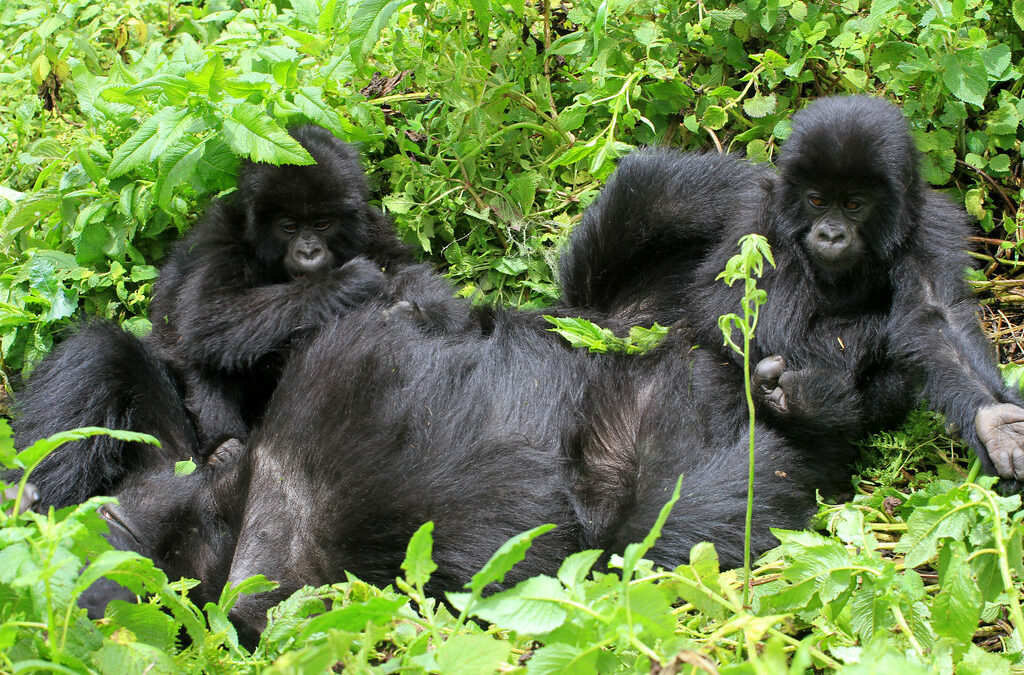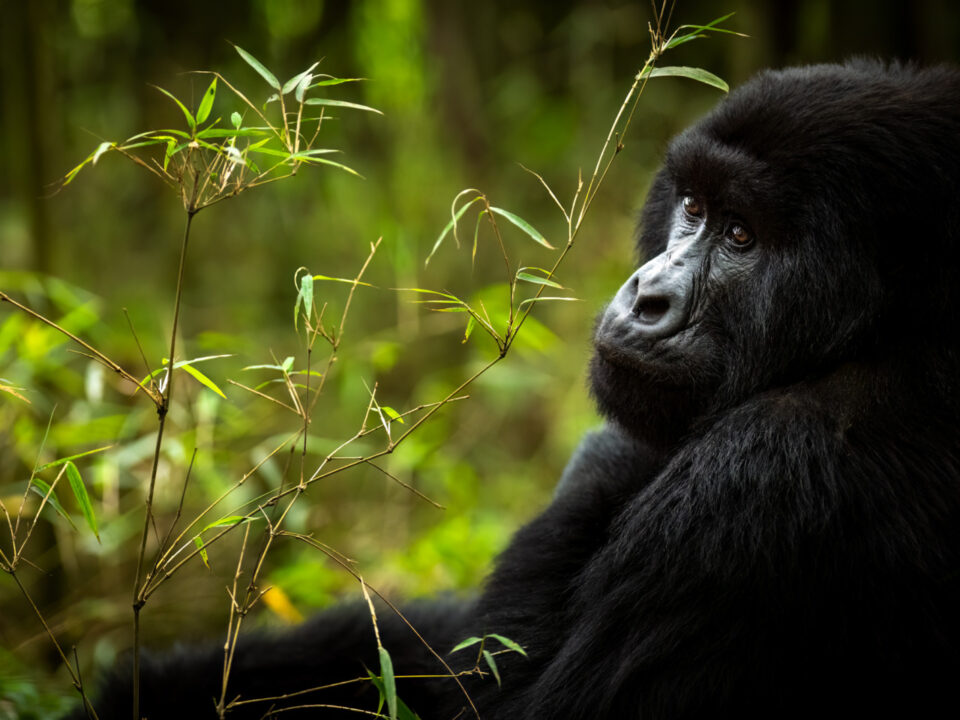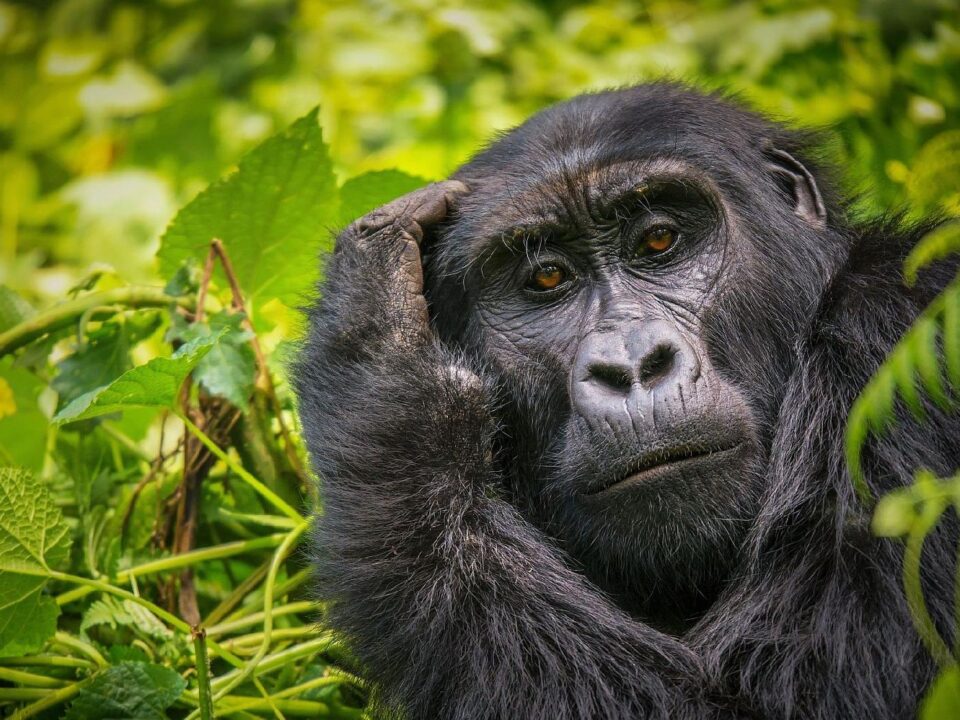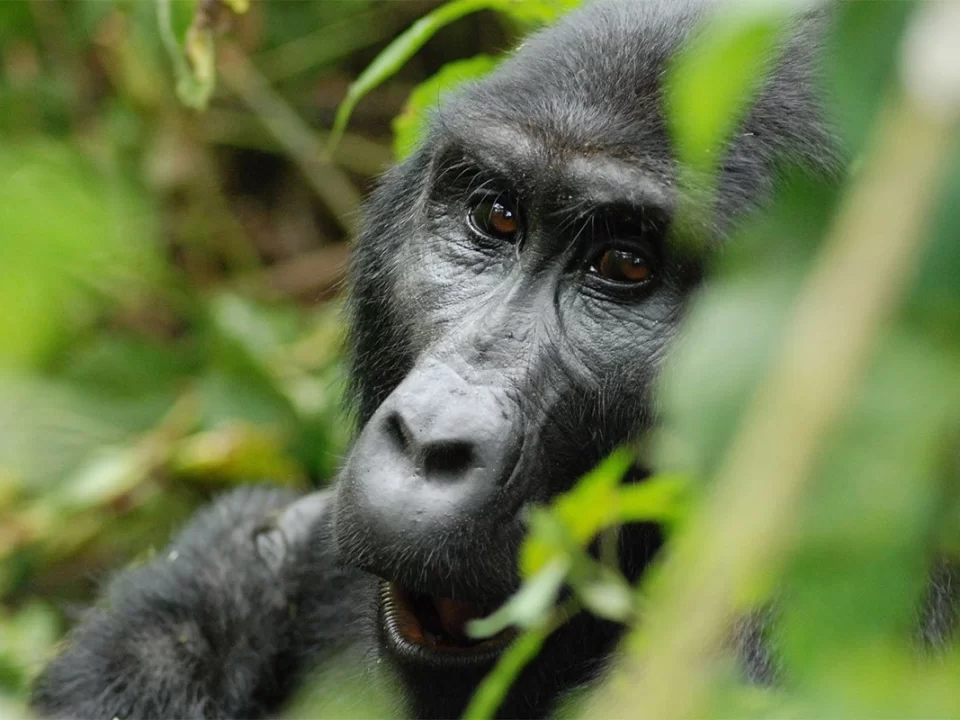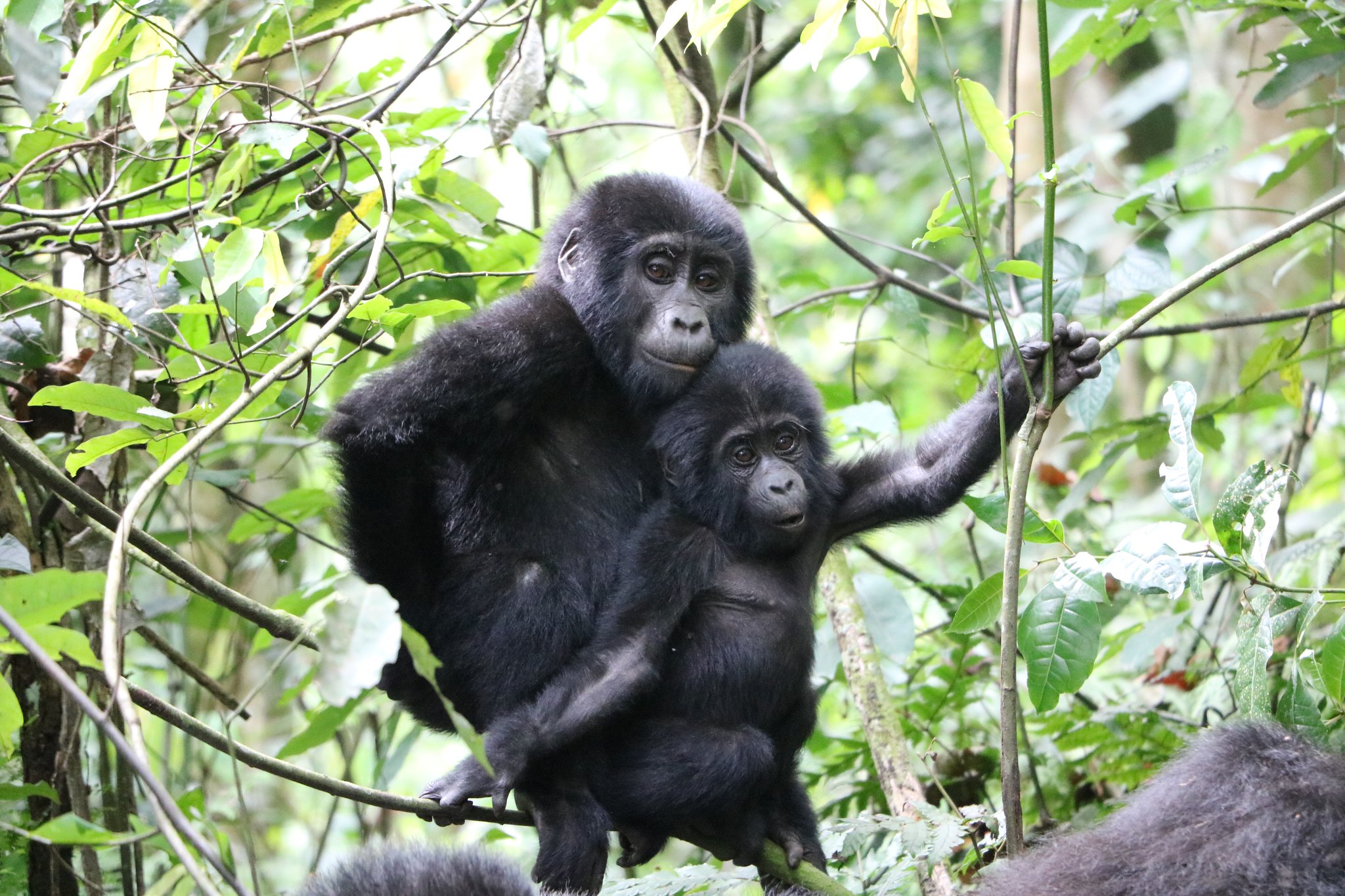
How to get to Bwindi Impenetrable National Park
December 26, 2022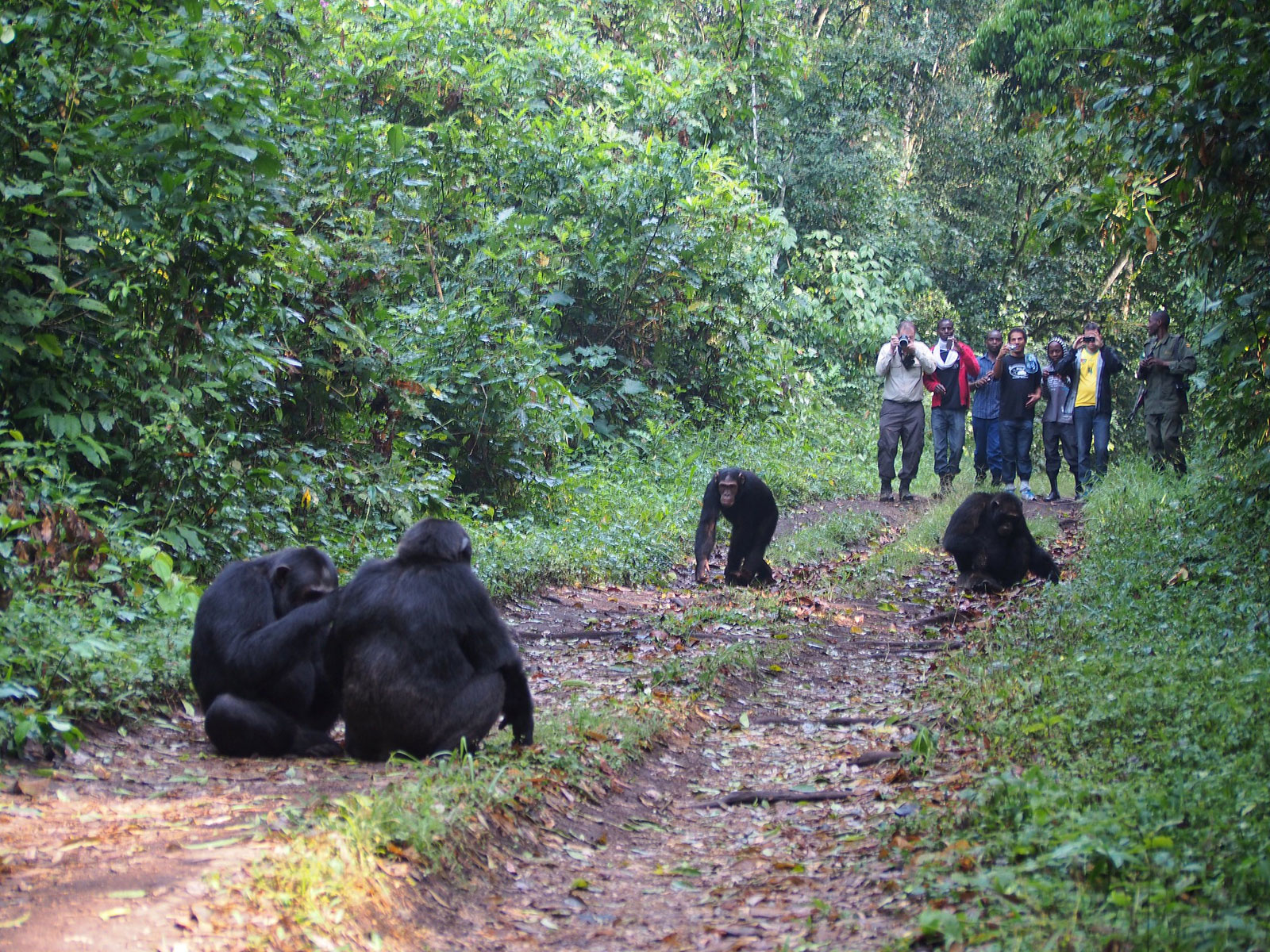
Chimpanzee Habituation Experience in Kibale forest national park
December 29, 2022Comparing Gorilla Trekking and Habituation Experiences
While both gorilla habituation experience and one hour gorilla trekking involve visiting mountain gorillas, there are more differences than similarities between the two activities. In this article, we will compare these two options in terms of price, experience, duration, booking process, and chances of seeing gorillas. By breaking down the differences between these two popular tourist activities, we hope to help you make an informed decision about which one to include in your safari to Africa.
Gorilla Habituation
Gorilla habituation is the process of training mountain gorillas to become accustomed to the presence of humans. A team of experts, including primatologists, researchers, and staff from the national park where the mountain gorillas live, works with a selected gorilla family over a period of several years, gradually introducing them to human presence. Some gorilla families may take longer to adapt to humans, while others may be more quickly accustomed to their presence. Once the gorillas are comfortable with human visitors, they may be opened up for tourist encounters through the gorilla habituation experience.
The gorilla habituation experience was first introduced as a tourist activity in Bwindi Impenetrable National Park four years ago, in 2014. At that time, the park management introduced a four-hour gorilla trek in the southern part of the park, which allowed a maximum of four people to visit a habituated gorilla family. Trek Africa Expeditions was one of the first tour companies to offer escorted gorilla habituation tours to Nkuringo and Rushaga. Since 2014, the company has continued to excel in organizing these exciting four-hour gorilla treks.
Comparing Gorilla Habituation Experience to Normal Gorilla Trekking
Gorilla habituation experience was introduced in Uganda in 2014 as a way for visitors to spend more time with mountain gorillas. Trek Africa Expeditions has led hundreds of tours to Bwindi Impenetrable National Park since the introduction of this activity. During the gorilla habituation experience, visitors can spend four hours with a gorilla family that is still in the process of being habituated, participating in activities such as naming the gorillas, observing their behavior, and listening to informative talks from experts. This allows visitors to learn more about the mountain gorillas, including how they express emotions like happiness, anger, and fatigue. For more information, please contact us.
How many individuals are allowed to visit a gorilla habituation group?
The number of individuals allowed to visit a particular gorilla group per day is limited to four in order to minimize the impact of human presence on these semi-habituated gorillas. A total of four permits are available each day, 120 per month, and 1440 per year. If you are interested in participating in a gorilla habituation experience from 2020-21 onwards, please contact Trek Africa Expeditions in advance to check for availability and reserve your permit. There is no additional fee for booking a gorilla habituation permit as long as you book an all-inclusive tour with Trek Africa Expeditions. Please contact us for more information.
How much does a gorilla habituation experience permit cost?
A mountain gorilla habituation experience permit costs $1500 per person for foreign non-residents, $1000 for foreign residents with a valid passport, and Shs750,000 for East African citizens. This fee is more expensive compared to the normal mountain gorilla trekking permit in Uganda, which costs USD800 starting July 1st. The fee for a habituation experience includes up to 4 hours with the gorillas, a forest trek with habituation experts, park entry fees for Bwindi, security, and a certificate upon completion of the trek. The fee does not include accommodation, meals, or transportation to and from Bwindi Impenetrable National Park.
Reasons for the high cost of the $1500 gorilla habituation permit
There are several reasons why it may be worth paying $1500 or $1000 for a gorilla habituation experience rather than the standard USD800 mountain gorilla trekking permit in Uganda.
First, the habituation experience allows you to view gorillas for four hours in one day, whereas the standard trek only allows for one hour with the gorillas. If you want to spend more time with the mountain gorillas, the habituation experience is a more cost-effective option, as it would take four days and $2800 (for 4 standard trek permits) to achieve the same amount of time with the gorillas.
Second, the habituation experience is a unique opportunity to observe the gorillas as they are being habituated to human presence, a process that takes several years. This is a rare and special experience that is not available with the standard trek.
Overall, the higher cost of the habituation experience is justified by the extended time with the gorillas and the unique opportunity to observe their habituation process. If you are interested in spending more time with the mountain gorillas and want a truly special and immersive experience, the habituation experience may be the best choice for you.
Chances of encountering gorillas on a habituation experience safari?
It is important to note that the chances of encountering mountain gorillas on a habituation experience safari may be lower than on a standard trek, as the gorillas are not yet fully habituated to human presence. However, we have a 100% success rate for all of our habituation safaris. The main challenge of these safaris is that the hikes can be strenuous as the gorillas may try to avoid human contact. Despite this, the habituation experience offers a unique opportunity to participate in all aspects of the habituation process and see and photograph the gorillas up close.
Which national park offers gorilla habituation experiences?
Mountain gorillas can be found in four national parks, but only Bwindi Impenetrable National Park in Uganda offers gorilla habituation experiences. These experiences are only available in the southern part of the park, which includes the Rushaga and Nkuringo regions in Kisoro district. Habituation experiences are not currently available in Volcanoes National Park or Mgahinga National Park, as all of the gorilla families in these parks are fully habituated. If you are interested in a gorilla habituation experience, Uganda and Bwindi Impenetrable National Park are the place to go. Trek Africa Expeditions can help you plan your trip.
How many gorilla families are available for habituation safaris?
Currently, there are only two mountain gorilla groups in Uganda’s Bwindi Impenetrable National Park that are eligible for habituation experiences. These groups are located in the southern part of the forest. Each group can accommodate up to four people per day, for a total of eight permits available daily, 240 per month, and 2880 per year. As the number of gorillas and groups increases, it is possible that additional families may be introduced in other regions of the park, such as Ruhija in the east and Buhoma in the north.
Gorilla trekking
Gorilla trekking is a guided activity in which hikers search for habituated gorilla families in the wild. The trek begins at 8:30am with a briefing, followed by a hike in the forest to locate the gorillas. This activity can take anywhere from 30 minutes to several hours, depending on the movement of the animals and the physical fitness of the trekkers. Trained ranger guides lead the trek, assisted by armed rangers for security. The trek starts at the park headquarters, following a trail to the gorillas’ previous night’s nest. Once the gorillas are found, trekkers are allowed to spend one hour observing and photographing the animals, and asking questions. At the end of the hour, trekkers return to the park headquarters, where they receive a certificate as proof of their participation in gorilla conservation efforts. If you wish to do another trek the next day, be sure to contact Trek Africa Expeditions to book your permits in advance.
It is impossible to discuss the history of gorilla trekking without mentioning the influential work of primatologist Diane Fossel. Fossel dedicated much of her time to gorilla habituation and trekking in the Virunga region, particularly in Rwanda, where the practice of gorilla trekking originated and later spread to other countries.
In Uganda, gorilla trekking began in 1993 with the opening of the Mubare gorilla family in Buhoma, located in the northern part of Bwindi Impenetrable National Park. This family, which remains popular among those interested in visiting the oldest habituated gorilla group, has undergone changes in numbers over the years, particularly after the death of Ruhondeza, the main silverback. The group’s numbers decreased significantly, but later improved when the new silverback recruited members from other families.
Booking Gorilla Permits and Tours in Uganda and Rwanda
Securing a gorilla permit is the first step to ensure a successful gorilla trek in Uganda or Rwanda. A gorilla permit is a document issued by the Uganda Wildlife Authority in Uganda and the Rwanda Development Board in Rwanda, allowing visitors to spend one hour with a habituated gorilla family. Mountain gorillas can also be visited in the Democratic Republic of Congo.
To book a gorilla permit, contact Trek Africa Expeditions with your desired dates. The company will check for availability and reserve the permit if possible. Once payment is made, the company will pay for the gorilla permit and organize a tour around the permit dates. Some of their most popular tours with guaranteed gorilla permits are available to view on their website.
Cost of Gorilla Permits in Uganda and Rwanda
The cost of gorilla permits in Uganda and Rwanda can vary, especially after two years. As of 2020-2021, the price for a Rwanda gorilla permit to spend one hour with the gorillas is $1500 per person, while the price for a Uganda gorilla permit is USD800 per person, starting on July 1, 2020. However, if you book your gorilla tour with Trek Africa Expeditions before June 30, 2020, you can take advantage of the lower price of USD700 for a Uganda permit. Rwanda is generally more expensive than Uganda because it aims to position itself as a luxury destination. If you are looking for a more affordable option, consider gorilla trekking in Uganda.
Regardless of which country you choose, the price of the gorilla permit includes one hour with the mountain gorillas, the services of a ranger guide, security, and a certificate that will be presented to you at the end of the trek.
How long will I stay with mountain gorillas in Uganda or Rwanda.
During a gorilla trek in Uganda or Rwanda, you will be allowed to spend one hour with a group of habituated mountain gorillas. During this time, you can take photos and simple videos, following the rules and regulations set by the respective organizations in each country. Please note that while the actual encounter with the gorillas is limited to one hour, the overall trek may take anywhere from 30 minutes to several hours. If you wish to spend more time with the gorillas, you will need to book a separate gorilla permit in advance. It is not possible to see or track the gorillas twice on the same day. If you want to undertake a second or third trek, you will need to wait until the following day in Uganda.
Number of Habituated Gorilla Families in Uganda and Rwanda
According to the current mountain gorilla census, Uganda has the highest number of mountain gorillas in the world, with over 460 individuals in Bwindi and Mgahinga combined. Uganda also has a higher number of habituated mountain gorillas compared to Rwanda and the Democratic Republic of Congo. Currently, there are 20 habituated mountain gorillas in Bwindi and one in Mgahinga. Bwindi alone has 50 gorilla families living in the forest. In Rwanda, there are 20 gorilla families, with 10 available for gorilla trekking and 10 reserved for research.
Chance of encountering gorillas on any trek in Rwanda or Uganda
In both Uganda and Rwanda, the chances of seeing mountain gorillas on a normal trek are higher than on a gorilla habituation experience safari. Based on our experience, the chances of seeing gorillas on any normal trek in either country are approximately 98%. This high likelihood is due to the organized nature of gorilla trekking in both countries. An advance team typically locates the gorillas and directs the rest of the group to their location. If you do not see gorillas on your trek, terms and conditions may apply.
For more information about gorilla habituation experiences and gorilla trekking, don’t hesitate to contact Trek Africa Expeditions. The company has mastered the art of organizing amazing gorilla tours to Uganda and Rwanda that meet the interests, time constraints, and budgets of their clients.

